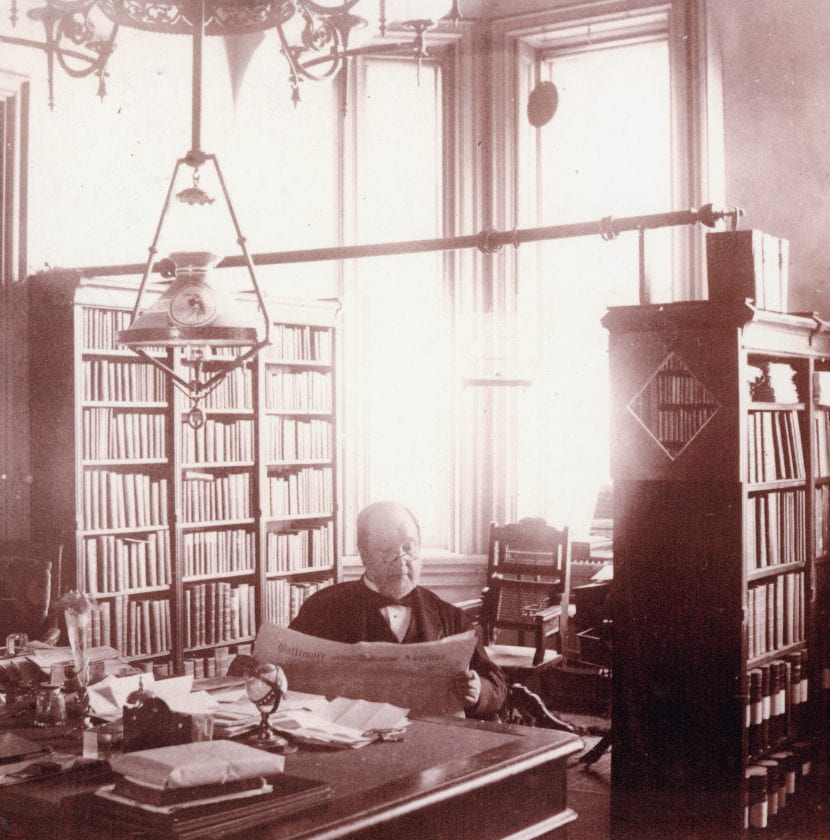To celebrate the inauguration of Kim Schatzel as Towson University’s 14th leader, we are looking back at the past leaders of the school. These essays are from a book we helped craft, Towson University: The First 150 Years.
As the first and longest-serving principal/president in Towson’s history, no one had more impact on the school than McFadden Alexander Newell. From the opening of the first classes in January, 1866 to his retirement in 1890, his vision and leadership were dominant forces not only in the school’s development but in the improvement of public schools throughout the state.
Newell was born in Belfast, Ireland in 1824, the son of John Newell, a respected Irish educator. After attending private schools in his early years, he studied at Queen’s College, Belfast, before graduating from trinity College, Dublin at the age of 22. In 1848, he moved his family to the United States and began his long career as teacher and head of several schools, including Baltimore Central High School (now City College), before his appointment as the principal of the new Maryland State Normal School. In addition to teaching classes and leading the school as its principal, he also served as president of the Maryland State Board of Education from 1867 until 1874, when he was made Secretary. He helped found and edit The Maryland State Journal, published a number of textbooks with William R. Greery titled The Maryland Series, and published a series of six books called The Newell Readers. He was president of the National Education Association, and was offered the position of U.S. Commissioner of Education by President Grover Cleveland (which he declined because he did not want to move his large family to Washington). Among other honors, Princeton conferred upon him an honorary degree of Ph.D. All this he accomplished while carrying out his daily administrative duties at the school including teaching classes.
Throughout the quarter of a century that Newell was principal, he never ceased to advocate for the resources needed to expand the size of the school and increase the number of students enrolled.
Besides writing annual reports outlining the progress of the school and clarifying his goals for the school, he visited most of the counties of Maryland during the summer month to recruit future teachers and to argue for improved standards for better teaching. Enrollment increased from the initial 11 students to 321 students in 1890 when he retired. By 1882, one in every six public teachers in Maryland was educated at MSNS.
Under Newell’s leadership the quality of the curriculum steadily improved. Initially there were two choices of study for the students: the “Academic Course” designed for preparatory or junior students and the “Professional Course” for advanced students. With the number of practicing teachers and qualified students at MSNS increasing, Newell began to phase out the lower level of classes. As Newell advocated in his annual reports for higher standards, he continued to press for higher salaries for teachers and for more resources for the normal school.
Newell also established the first Model Schools (at first separated by gender, but then coeducational) to provide opportunities to practice teaching. The first Model School was inconveniently located across town on Broadway, but soon relocated a short walk from the normal school. It was Professor Newell who was persistent in providing suitable housing for resident students. He recognized that many students — mostly females — grew up in rural Maryland and needed support and protection in the urban environment. Although dormitories were not provided during Newell’s tenure as principal, he nevertheless found homes and landlords who offered safe housing, good meals, and a friendly environment for about $4 per week.
Described as a “warm-hearted” man with a keen wit, M.A. Newell set high standards for his teachers and staff, his students, and for the principals and presidents who would follow in his footsteps.
